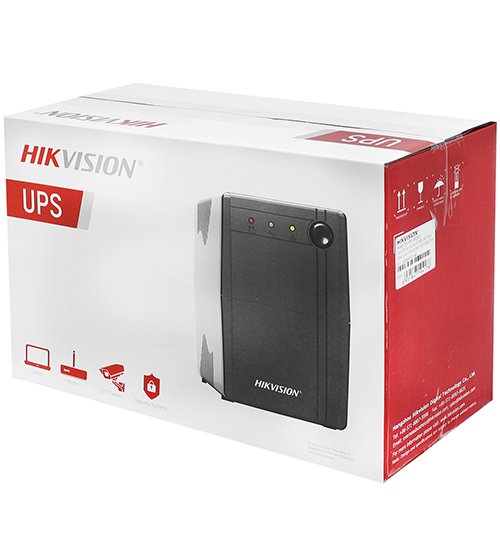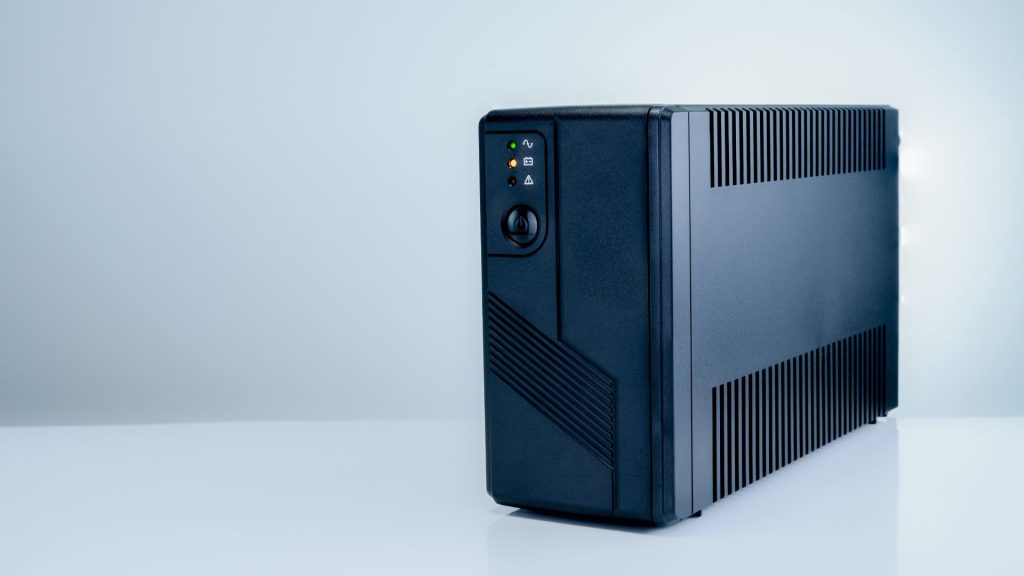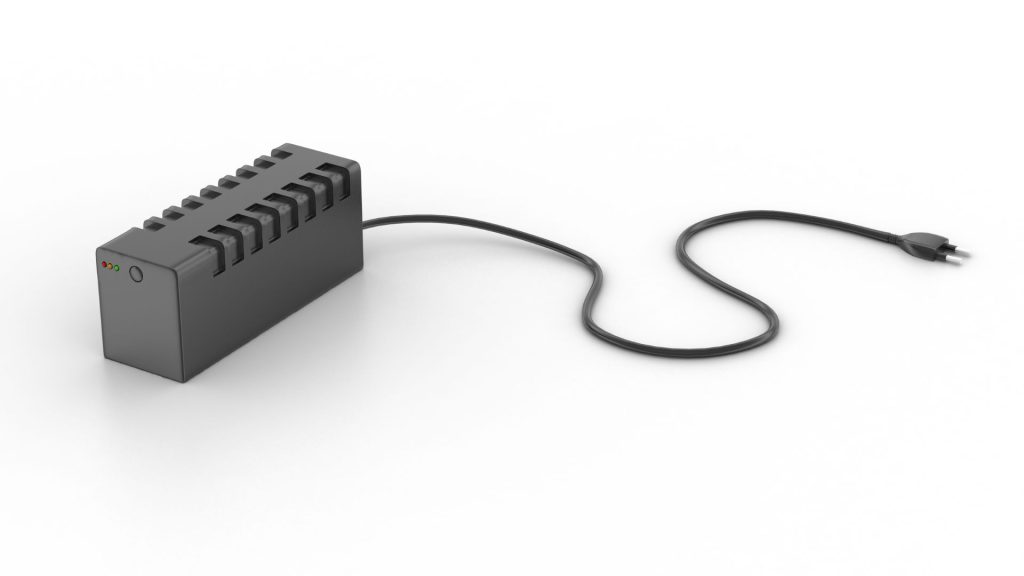Key Takeaways
| Topic | Summary |
|---|---|
| Understanding UPS Systems | A UPS (Uninterruptible Power Supply) provides backup power to your electronics during power outages or voltage fluctuations, acting as a buffer between your devices and the electrical mains to ensure a continuous and stable supply of electricity. The three main types are standby, line-interactive, and online double-conversion UPS systems, each offering different levels of protection and features. |
| Choosing the Right UPS System | Assess your power requirements by calculating the total wattage of devices you want to protect, and choose a UPS system with the appropriate capacity. Determine your runtime needs based on how long you need your devices to remain operational during an outage. Look for additional features like surge protection, automatic voltage regulation, and remote monitoring capabilities. |
| Installation and Maintenance | UPS systems come in various form factors, such as rack-mounted, tower, and indoor power cabinets, to suit different environments. Regular maintenance, including battery testing and replacement, is crucial to ensure optimal performance when needed. Keep your UPS system clean, charged, and ready for use. |
| Benefits of Having a UPS System | A UPS system protects your electronics from power surges, outages, and voltage spikes, preventing data loss and potential damage. It reduces downtime, ensures continuous operation during outages, and can extend the lifespan of your valuable electronics by providing a stable and clean power supply. |
Recommended Product | The Hikvision 600VA/360W Line-interactive UPS DS-UPS600 is a reliable and efficient power supply solution for your home network and electronics. It provides power conditioning, surge protection, and backup power in case of a power outage, with a transfer time of less than 10ms for seamless power transfer. Buy Now |
In our modern homes, we rely heavily on electronic devices and gadgets for entertainment, communication, and productivity. From smartphones and laptops to home theater systems and security cameras, these valuable electronics have become an integral part of our daily lives. However, the ever-present threat of power outages and electrical disturbances can wreak havoc on our beloved gadgets, potentially causing data loss, hardware damage, and costly repairs. This is where an Uninterruptible Power Supply (UPS) comes into play, serving as a crucial line of defense against these power-related perils.
Understanding UPS Power Supply Systems
A UPS is a device that provides backup power to electronic equipment during power outages or voltage fluctuations. It acts as a buffer between your devices and the electrical mains, ensuring a continuous and stable supply of electricity. There are three main types of UPS systems: standby, line-interactive, and online double-conversion.
- Standby UPS: This is the most basic and affordable type of UPS. It monitors the incoming power and switches to battery power when it detects an outage or voltage irregularity. Standby UPS systems are suitable for powering non-critical devices and can handle minor power fluctuations.
- Line-interactive UPS: A step up from standby UPS, these systems offer automatic voltage regulation in addition to battery backup. They can correct minor power fluctuations without switching to battery mode, making them more efficient and suitable for devices that require a stable voltage supply.
- Online Double-Conversion UPS: These are the most advanced and expensive UPS systems. They constantly convert incoming AC power to DC and then back to AC, providing a completely isolated and conditioned power supply to your devices. Online double-conversion UPS systems offer the highest level of protection against power disturbances and are ideal for mission-critical equipment.
Choosing the Right UPS System
When selecting a UPS system for your home, it’s crucial to consider your specific power requirements and runtime needs. Here are some key factors to keep in mind:
- Assessing Power Requirements: Start by calculating the total wattage of all the devices you want to protect. Most UPS systems have a rated power capacity in volt-amperes (VA) or watts (W). Make sure to choose a UPS system that can handle the combined power demand of your electronics, with some extra headroom for future expansion.
- Runtime Requirements: Determine how long you need your devices to remain operational during a power outage. This will help you choose a UPS system with the appropriate battery capacity. For example, if you need to keep your home office running for an hour during an outage, you’ll require a UPS with a longer runtime than someone who only needs to power a router and modem for 15 minutes.
- Additional Features: Look for UPS systems that offer additional features like surge protection, automatic voltage regulation (AVR), and remote monitoring capabilities. Surge protection safeguards your devices from damaging power spikes, while AVR ensures a consistent voltage supply. Remote monitoring allows you to check the status of your UPS and receive alerts from your smartphone or computer.

Installation and Maintenance
When it comes to installation, UPS systems come in various form factors to suit different environments. Rack-mounted UPS units are designed for server rooms and network closets, while tower and indoor power cabinet models are better suited for home office setups or entertainment centers.
Proper maintenance is crucial to ensure your UPS system functions optimally when you need it most. Regular battery testing and replacement are essential, as batteries degrade over time and need to be swapped out every few years, depending on usage and environmental conditions. Additionally, keep your UPS system clean and free from dust and debris, and always keep it charged and ready for use.
Benefits of Having a UPS System at Home
Investing in a reliable UPS system for your home offers numerous benefits that extend beyond just protecting your gadgets. Here are some key advantages:
- Protection from Power Surges and Outages: A UPS acts as a shield against power surges, voltage spikes, and outages, safeguarding your electronics from potential damage and data loss.
- Prevention of Data Loss: Sudden power interruptions can cause data corruption or loss, particularly for devices like computers and network-attached storage (NAS) systems. A UPS ensures a controlled shutdown or seamless transition to battery power, preventing data loss and potential file corruption.
- Reduced Downtime: Power outages can disrupt your work, entertainment, and daily routines. With a UPS, you can continue using your devices for a period of time, minimizing downtime and ensuring productivity or enjoyment without interruption.
- Extended Equipment Lifespan: Power fluctuations and surges can gradually degrade electronic components, leading to premature hardware failures. By providing a stable and clean power supply, a UPS can help extend the lifespan of your valuable electronics.

Recommended UPS Products and Suppliers
When it comes to choosing a UPS system for your home, there are many reputable brands and models to consider. One product that stands out is the Hikvision 600VA/360W Line-interactive UPS DS-UPS600. This line-interactive UPS offers automatic voltage regulation, surge protection, and a compact design suitable for home or office environments.
Other notable UPS manufacturers include APC, CyberPower, Tripp Lite, and Vertiv (formerly Liebert), all of which offer a range of UPS solutions for residential and commercial applications. When selecting a UPS, consider factors like runtime, load capacity, and additional features to find the best fit for your specific needs and budget.
Conclusion
In today’s technology-driven world, our homes are filled with valuable electronic devices that have become integral to our daily lives. From entertainment systems and home offices to security cameras and smart home hubs, these gadgets rely on a consistent and stable power supply to function properly. An Uninterruptible Power Supply (UPS) is the ultimate safeguard against power outages, surges, and electrical disturbances, ensuring your electronics remain protected and operational even when the lights go out.
By investing in a reliable UPS system tailored to your specific power requirements and runtime needs, you can enjoy peace of mind knowing that your gadgets are shielded from the potentially devastating effects of power-related issues. Whether you opt for a basic standby UPS or a more advanced online double-conversion model, the benefits of having a UPS at home are undeniable – from preventing data loss and reducing downtime to extending the lifespan of your valuable electronics.
Don’t wait until it’s too late; protect your gadgets and ensure uninterrupted connectivity, productivity, and entertainment by making a UPS system an essential part of your home setup. Explore the wide range of UPS solutions available and invest in the one that best suits your needs and budget. Your gadgets – and your peace of mind – will thank you.
FAQs
- What is a UPS (Uninterruptible Power Supply)? A UPS is a device that provides backup power to electronic equipment during power outages or voltage fluctuations. It acts as a buffer between your devices and the electrical mains, ensuring a continuous and stable supply of electricity.
- How does a UPS work? A UPS contains a battery that charges when connected to a power source. When a power outage or voltage irregularity occurs, the UPS automatically switches to battery power, providing a seamless transition and preventing disruptions to your devices.
- Why do I need a UPS for my home electronics? Power outages and electrical disturbances can cause data loss, hardware damage, and costly repairs to your valuable electronics. A UPS protects your devices from these risks, ensuring continuous operation and preventing potential data corruption or component failures.
- What are the different types of UPS systems? The three main types of UPS systems are standby, line-interactive, and online double-conversion. Standby UPS is the most basic and affordable option, while line-interactive UPS offers automatic voltage regulation, and online double-conversion UPS provides the highest level of protection against power disturbances.
- How long will a UPS keep my devices running during a power outage? The runtime of a UPS during a power outage depends on the battery capacity and the power consumption of the connected devices. Typically, a UPS can provide backup power for a few minutes to several hours, depending on its specifications and the load connected to it.
- How do I choose the right UPS for my home? When choosing a UPS for your home, consider the total power requirements of the devices you want to protect (in watts or volt-amperes), the desired runtime during an outage, and any additional features like surge protection or automatic voltage regulation. Also, consider the form factor (tower, rack-mounted, etc.) that best suits your setup.
- How often should I replace my UPS battery? UPS batteries have a limited lifespan, typically ranging from 3 to 5 years, depending on usage and environmental conditions. Regular battery testing and replacement are crucial to ensure your UPS is ready to perform when needed. Most UPS systems provide battery status indicators or alerts to help you monitor the battery’s health.



